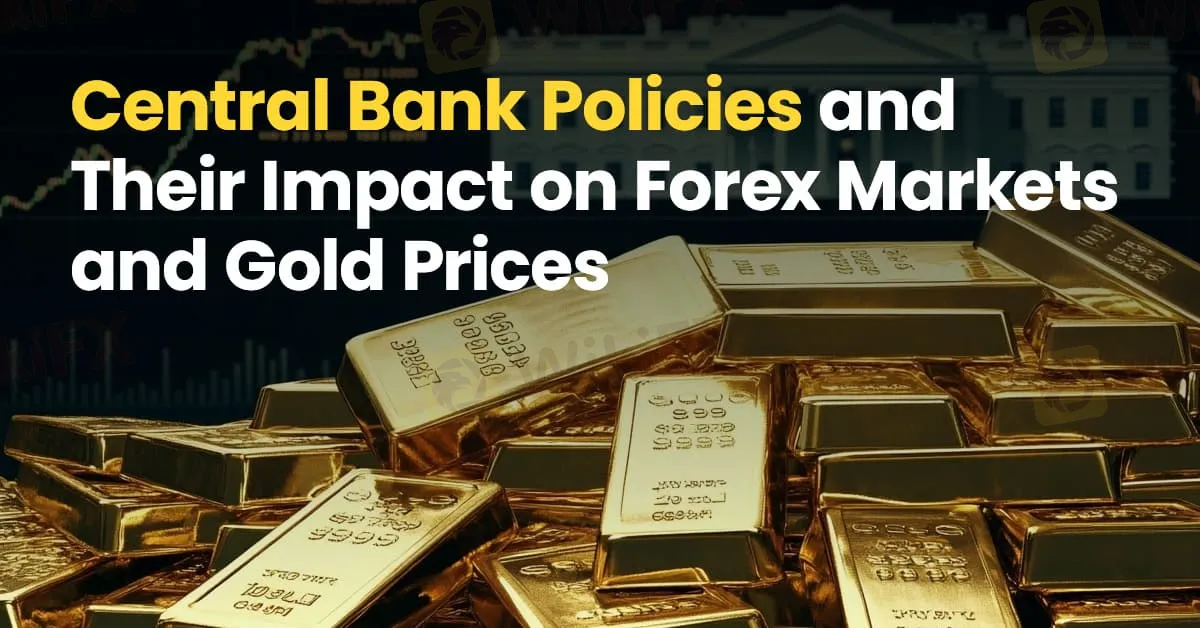Central Bank Policies,Forex Markets and Gold Prices
Abstract:Central banks play a pivotal role in shaping global economic landscapes. Their policies—ranging from interest rate adjustments to quantitative easing—directly influence both forex markets and the price of gold. As major players, central banks not only aim to stabilize their economies but also inadvertently set off a chain reaction in the trading world.

Introduction
Central banks play a pivotal role in shaping global economic landscapes. Their policies—ranging from interest rate adjustments to quantitative easing—directly influence both forex markets and the price of gold. As major players, central banks not only aim to stabilize their economies but also inadvertently set off a chain reaction in the trading world.
The Role of Central Banks in Forex Markets
Central banks control monetary policy, which is key to managing inflation and fostering growth. When a central bank adjusts interest rates, it affects a countrys currency value. Higher interest rates often attract foreign capital, leading to an appreciation of the currency. Conversely, lower rates can weaken a currency, as investors seek better returns elsewhere. Traders in the forex market closely monitor these decisions to capitalize on expected movements.
Moreover, policies such as quantitative easing—where central banks purchase government securities—can flood the market with liquidity. While this approach supports economic growth, it may also devalue the currency, increasing volatility in forex markets.
Impact on Gold Prices
Gold has long been considered a safe-haven asset, particularly during times of economic uncertainty or when central bank actions hint at potential instability. When currencies fall in value due to loose monetary policies, investors often flock to gold as a store of value. As demand increases, so does the gold price. Conversely, when strong central bank policies lead to robust economic conditions and stable currencies, the allure of gold may diminish, leading to lower prices.
Conclusion
Central bank policies are a double-edged sword—they provide necessary economic support while also triggering significant shifts in forex markets and gold prices. Traders and investors must therefore remain vigilant, keeping abreast of policy announcements and economic forecasts to navigate the interconnected realms of currency and precious metal markets successfully.

Read more

Broker Comparsion: FXTM vs AvaTrade
FXTM and AvaTrade are two well-established online brokers offering forex and CFD trading across global markets. Both enjoy strong reputations and high ratings on WikiFX—FXTM holds an AAA overall rating, while AvaTrade scores 9.49/10, indicating they’re regarded as reliable choices by the community. However, since brokers have great reputation in the industry, how do we know which one is more suitable for individuals to invest in? Today's article is about the comparison between FXTM and AvaTrade.

Shocking Move: Yen Breaks Past 140 Barrier!
The yen's breakout above the 140 mark has caught global attention, and the reasons behind it are more than technical.

FINRA fines SpeedRoute for alleged rule violations
The Financial Industry Regulatory Authority (FINRA) has imposed a $300,000 fine on SpeedRoute LLC for a series of supervisory, risk management, and anti-money laundering (AML) program deficiencies spanning from 2017 to the present. Of this amount, $75,000 is payable to FINRA, with the remainder offset by SpeedRoute’s limited ability to pay. In addition to the monetary penalty, SpeedRoute has been censured and ordered to overhaul its compliance framework, including enhancing its written supervisory procedures (WSPs) for market access controls and strengthening its AML program.

Nigeria's Oil Crisis: How Are Stakeholders Responding?
Despite being rich in oil, Nigeria struggles with refining shortages. What’s behind this paradox, and how are different actors reacting?
WikiFX Broker
Latest News
Love, Investment & Lies: Online Date Turned into a RM103,000 Scam
Broker Took 10% of User's Profits – New Way to Swindle You? Beware!
Pi Network: Scam Allegations Spark Heated Debate
Broker Comparsion: FXTM vs AvaTrade
Account Deleted, Funds Gone: A New Broker Tactic to Beware Of?
Broker’s Promise Turns to Loss – Funds Disappear, No Compensation!
StoneX Subsidiary, Gain Global Markets Bermuda, Penalized for Trading Misconduct
El Salvador and U.S. Launch Cross-Border Crypto Regulatory Sandbox
The Instagram Promise That Stole RM33,000
Coinbase Launches Bitcoin Yield Fund for Institutional Investors
Rate Calc
